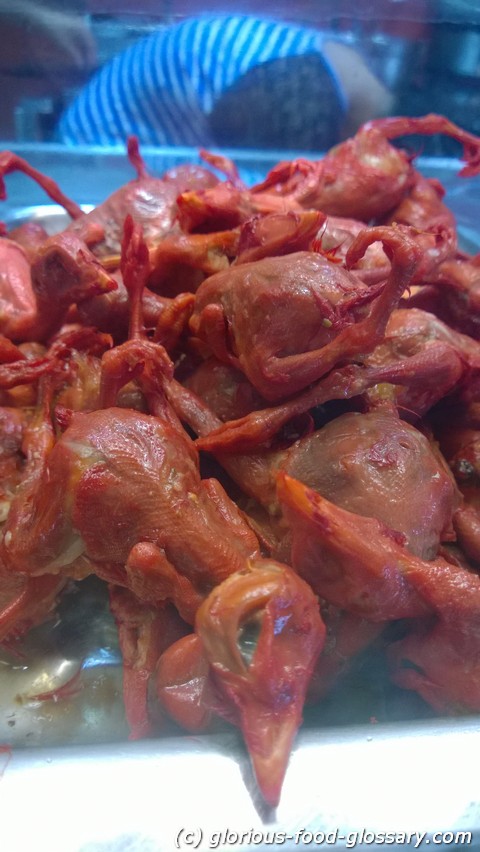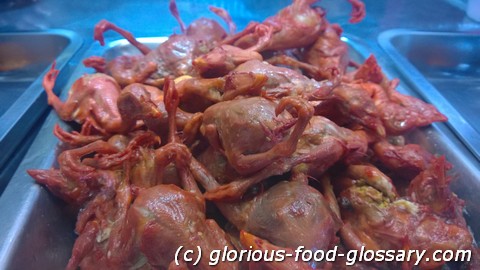Day-Old chicken in the food context refers to very young chickens that are typically one day old or less. These chickens are often used in culinary preparations due to their tenderness and delicate flavor. While they are not commonly consumed as a standalone dish, day-old chickens serve as a versatile ingredient in various cuisines, particularly in dishes that require tender and flavorful meat. This article delves into the culinary applications, examples, and potential risks associated with day-old chicken, along with a popular recipe.
Application Areas of Day-Old Chicken:
-
Culinary Arts: Day-old chickens are used in a wide range of culinary applications, including soups, stews, curries, and stir-fries.
-
Restaurant Industry: Many restaurants incorporate day-old chicken into their menus, offering dishes that highlight the tenderness and unique flavor of this young poultry.
-
Home Cooking: Home cooks experiment with day-old chicken in various recipes, exploring different flavors and cuisines.
Examples of Well-Known Culinary Applications:
-
National: In some countries, day-old chicken is a key ingredient in traditional dishes like chicken congee, a popular rice porridge.
-
International: Internationally, day-old chicken is used in diverse recipes, such as Japanese chicken karaage, Korean samgyetang, and Chinese ginger chicken soup.
Risks Associated with Day-Old Chicken:
-
Food Safety: Like any poultry product, day-old chicken must be handled and cooked properly to avoid the risk of foodborne illnesses, such as salmonella.
-
Quality Control: The quality of day-old chicken can vary, so sourcing it from reputable suppliers is crucial to ensure safety and flavor.

Popular Recipe: Chicken Congee
Ingredients:
- 1 cup rice
- 4 cups chicken broth
- 1 day-old chicken, cut into pieces
- Ginger slices
- Salt and white pepper to taste
- Green onions, chopped
- Soy sauce (optional)
-
Rinse the rice thoroughly and drain.
-
In a large pot, bring the chicken broth to a boil.
-
Add the rice, ginger slices, and day-old chicken pieces to the boiling broth. Reduce the heat to a Simmer and cover the pot.
-
Cook for about 30-40 minutes, stirring occasionally, until the rice breaks down and the congee thickens.
-
Season with salt and white pepper to taste. Remove the ginger slices.
-
Serve hot, garnished with chopped green onions. Add soy sauce for extra flavor if desired.
History and Legal Considerations:
Day-old chicken has been a culinary ingredient for centuries, with various cultures incorporating it into traditional dishes. Legal considerations primarily revolve around food safety regulations, ensuring that day-old chicken is handled, stored, and prepared according to health and safety guidelines to prevent foodborne illnesses.
Examples of Sentences:
- The chef prepared a delicious day-old chicken curry that was a hit among the diners.
- In Chinese cuisine, day-old chicken is often used in medicinal soups believed to have health benefits.
- She marinated the day-old chicken in a flavorful Blend of spices before grilling it to perfection.
- The recipe calls for a whole day-old chicken, but you can also use chicken pieces for convenience.
Similar Concepts or Synonyms:
- Young chicken
- Freshly hatched chicken
- Baby chicken
- Chick
Summary
Day-Old chicken is a culinary term that refers to very young chickens, typically one day old or less, used in a wide range of dishes across different cuisines. While not commonly consumed as a standalone dish, day-old chicken adds tenderness and flavor to various recipes. This versatile ingredient is appreciated in both the restaurant industry and home cooking. However, proper handling and cooking are essential to ensure food safety when working with day-old chicken. Popular recipes like chicken congee showcase the delicate flavors and tenderness of this young poultry. Historical culinary traditions and legal regulations emphasize the importance of safe and hygienic handling of day-old chicken in food preparation.

Related Articles to the term 'Day-Old chicken' | |
| 'Macaroni Soup' | ■■■■■■■■■■ |
| Macaroni Soup in the food context refers to a type of soup that features macaroni pasta as a primary . . . Read More | |
| 'Sibuyas' | ■■■■■■■■■■ |
| Sibuyas, in the food context, refers to onions. Onions are a widely used and versatile vegetable in culinary . . . Read More | |
| 'Calamar' | ■■■■■■■■■■ |
| Calamar in the food context refers to squid, a marine mollusk that is widely consumed in various cuisines . . . Read More | |
| 'Bulalo' | ■■■■■■■■■ |
| Bulalo is a delectable Filipino dish that holds a special place in Filipino cuisine. It is known for . . . Read More | |
| 'Squid Balls' | ■■■■■■■■■ |
| Squid Balls are a popular street food and culinary ingredient in various Asian cuisines, including Chinese, . . . Read More | |
| 'Loofah' | ■■■■■■■■■ |
| Loofah in the food context refers to the edible fruit of plants in the genus Luffa, particularly the . . . Read More | |
| 'Thakkali' | ■■■■■■■■■ |
| Thakkali, a term derived from the South Indian language of Tamil, refers to one of the world\'s most . . . Read More | |
| 'Thai' | ■■■■■■■■ |
| In the food context, Thai refers to the cuisine and culinary traditions of Thailand. Thai food is known . . . Read More | |
| 'Frango' | ■■■■■■■■ |
| Frango is the Portuguese word for \'chicken\', \'broiler\'. . . . . . . Read More | |
| 'Chili' | ■■■■■■■■ |
| Chili, also known as chili con carne, is a spicy stew made with chili peppers, meat (usually beef), beans, . . . Read More | |
